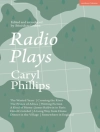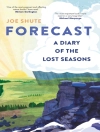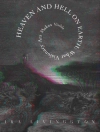In the carefully curated collection ‘Philip Gilbert Hamerton, ‘ the eminent works of Philip Gilbert Hamerton alongside Eugénie Hamerton explore a rich tapestry of artistic and literary expression. The anthology delves into a blend of essays, critiques, and narratives that embody the essence of 19th-century culture and aesthetics. Through a diverse array of styles ranging from vivid descriptive prose to incisive critical analysis, this collection encapsulates the complexity and depth of the era. With evocative and illustrative pieces that capture the nuances of art and nature, the anthology stands as a testament to the significance of the Hamertons in literary circles. The contributions of Philip Gilbert and Eugénie Hamerton to this anthology are noted for their profound insights into the Victorian artistic milieu. Their works collectively mirror the philosophical currents and societal shifts of their time. Aligning seamlessly with both Aestheticism and Naturalism, the Hamertons’ writings reflect a shared dedication to exploring the interplay between human perception and art. Their diverse backgrounds enrich the anthology, drawing from their experiences across Britain’s artistic landscape and beyond, offering readers a multifaceted view of intellectual and cultural environments. This anthology is an invaluable resource for readers seeking to immerse themselves in the intellectual discourse of the Victorian period. By engaging with the complete works of the Hamertons, particularly appreciated for their articulate and exploratory narratives, readers gain a broad understanding of the aesthetic and critical perspectives that shaped 19th-century thought. ‘Philip Gilbert Hamerton’ offers a unique scholarly opportunity to appreciate the confluence of ideas and styles, encouraging an appreciation for the layered dialogues and interpretive richness within a single, cohesive volume.
Sobre o autor
Philip Gilbert Hamerton was a distinguished English artist, art critic, and writer, renowned for his insightful engagement with art and literature. Born on September 10, 1834, in Laneside, a suburb of Shaw and Crompton, Lancashire, Hamerton’s formative years were marked by a deepening appreciation for the visual arts which later came to shape his professional pursuits. Known for his prolific literary output, Hamerton’s most notable works include ‘Painting in France, After the Decline of Classicism’ (1869), ‘The Intellectual Life’ (1873), and ‘The Life of J.M.W. Turner’ (1879), bespeaking the breadth of his interests and expertise. His writings often intertwined themes of art, philosophy, and personal experience, forming a distinctive literary style that combined scholarly analysis with introspective reflection. Hamerton’s books not only showcase his erudition but also reflect a life dedicated to the pursuit of artistic and intellectual growth. His influence extended beyond the page; he edited the fine arts journal ‘The Portfolio: An Artistic Periodical’ from 1870 to 1894, further cementing his status as an eminent figure in the Victorian art world. Hamerton passed away on November 4, 1894, leaving behind a legacy of thoughtful contemplation on aesthetics and creativity that continues to resonate with readers and scholars.












